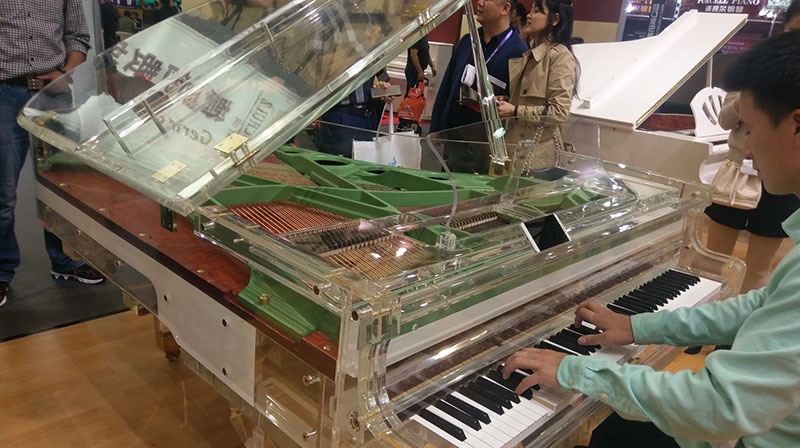Years ago virtually all piano key tops were made out of ivory. Ivory, as many of you already know, is made from elephant tusks. Eventually, the ivory trade was outlawed in the U.S. In the 1970’s in the United States, and into the 1980’s in Europe, the use of ivories on piano keys ceased. Today, almost all piano keys are made out of composite plastic. So, you might be wondering, where fake ivory key tops fall into this story. This is something you should be aware of.
Some pianists feel that ivory keys are superior to plastic key tops. While you can’t get a new piano with ivory key tops, many pianists still want the feel of ivory keys. In attempt to satisfy this crowd, some companies have developed “fake” or “imitation” ivory keys that are made to look and feel like ivory. Do they succeed?
Unfortunately, most of these attempts to simulate ivory keys are not very good. There are a lot of cheap imitations that add a textured look to the keys. However, they don’t feel any different from other plastic key tops and worse yet, they look fake!
Yamaha has used an imitation ivory key trademarked as, “Ivorite” that is an attempt at creating a synthetic ivory. It is a plastic key top that has a closer look and feel to ivory than traditional plastic key tops. Not all Yamaha pianos come with these key tops. So, is there really a benefit to this?
If you like the touch and feel of ivory and want a new piano, then this might be a possible solution for you. Something to keep in mind though is that if you are performing on other instruments, they are very likely to have plastic keys. So, it’s important to be comfortable playing pianos with plastic key tops since that is what you are most likely to encounter playing instruments outside of your home.
I would recommend avoiding cheap ivory imitations. You’re better off with standard plastic key tops because they are perfectly functional. They also look better than most imitation ivory key tops.
Thanks again for joining us here at Living Pianos. If you have any questions about this topic or any others, please contact us at: Info@LivingPianos.com (949) 244-3729









